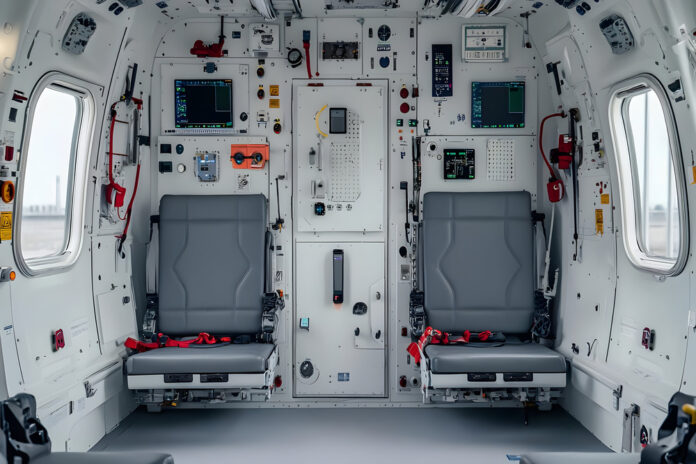Not every airplane seat is the same. While commercial airline passengers worry about comfort, specialized aircraft require seating arrangements that cater to other specific needs. Military transport aircraft, cargo planes, medical choppers, and research vehicles each require seats designed to fit their unique purpose. These seats must balance safety, function, and durability to help those who work globally.
Military Transport Requirements
Military aircraft encounter difficulties that commercial planes do not experience. Soldiers must swiftly rise from their positions to accomplish tasks or react to crises. Combat equipment, arms, and heavy machinery must be positioned comfortably near seated individuals without posing safety risks while in flight.
Military seating systems utilize lightweight materials capable of enduring extreme conditions. Seats can be folded against the walls of the cabin to provide cargo space when there are no troops present. Quick-release systems enable soldiers to leave aircraft swiftly during tactical missions or urgent scenarios.
These seats additionally safeguard occupants during rough landings or combat circumstances. Stronger structures and more cushioning protect aircraft seats from impact. During missions where military pilots must perform aggressive maneuvers to evade danger, secure systems ensure the safety of personnel and their equipment.
Medical Flight Considerations
Air ambulances and medical transport planes need seating that fulfills various functions beyond merely accommodating passengers. Medical teams require seats that transform into workstations for treating patients while in flight. Storage pockets integrated into the backs of seats contain essential medical supplies and equipment that crews need to retrieve promptly in emergencies.
Patient stretchers frequently take the place of conventional seats in medical aircraft. These specialized systems enable medical teams to conduct procedures while ensuring patient safety during transport. Adjustable mounting systems support patients of various sizes while offering stable bases for medical equipment and monitoring tools.
According to the experts over at LifePort, mission seating in medical aircraft must also ensure the safety of crew members who operate while the aircraft is in motion. Safety harnesses enable medical staff to navigate cabin spaces while staying connected to the aircraft framework. This mobility enables them to deliver patient care while remaining secure during turbulence or emergency actions.
Cargo and Research Applications
Cargo planes frequently transport passengers in addition to cargo, leading to distinct seating difficulties. When not in use, jump seats fold against the cabin walls, opening up the space for cargo on freight-only flights. The seats must hold crew and infrequent passengers, minimizing space in planes designed primarily for cargo, not people.
Research aircraft need seating that supports scientific gear and instruments in addition to human passengers. Seats typically come with attachment points for cameras, sensors, and recording devices that researchers utilize to gather data while in flight. Electrical outlets and data interfaces integrated into seating systems facilitate the electronic devices that researchers require for their tasks.
Safety Above All Else
Specialized aircraft seats need to meet stricter safety rules. Crash tests confirm that seats safeguard passengers during emergency landings or collisions. Fireproof materials stop seats from aiding cabin fires that may jeopardize lives in emergencies.
Emergency evacuation systems built into specialized seats assist occupants in quickly leaving aircraft during crises. Certain military seats feature ejection systems capable of propelling crew members to safety when aircraft are irreparably harmed. These intricate systems need consistent upkeep and evaluation to guarantee they operate effectively when required the most.
Conclusion
Specialized aircraft seating perfectly balances the requirements of engineering with the needs of the aircraft’s operation. These dedicated seating systems facilitate essential operations that safeguard lives, enhance scientific understanding, and ensure our communities are secure from global threats.

